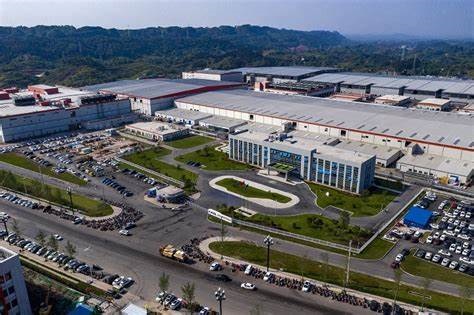The price of upstream raw materials breaks through the “ceiling”, can lithium battery companies bear the burden?
Since 2021, lithium salt prices have continued to rise. Today, lithium salt prices have once again broken through the “ceiling”. On February 23, the price of lithium salt rose further. On the same day, the price of industrial-grade lithium carbonate was 429,600 yuan/ton, and the price of battery-grade lithium carbonate was 448,000 yuan/ton.

Price raising
The rise in lithium salt prices is caused by inflation in the United States on the one hand, and the huge demand for lithium ore in the Chinese domestic new energy market on the other hand. Judging from the current supply and demand relationship, lithium salt prices will remain high in the near future.
The soaring price of lithium salt has squeezed the profit margins of lithium battery manufacturers and vehicle manufacturers. The inflection point is when lithium battery cathode material enterprises are generally unable to bear the pressure of rising raw materials.
At present, cathode material enterprises have reached a state of unprofitability. Of course, some companies still have profits, but this is mainly concentrated in those companies that previously had raw material reserves.

Multiple price adjustments
Randomly interviewed a number of lithium salt sellers and learned that on February 24, the price of lithium hydroxide reached 420,000 yuan / ton, industrial-grade lithium carbonate was 470,000 yuan / ton, and battery-grade lithium carbonate even reported 500,000 yuan / ton. price.
In 2021, the price of lithium salt will recover rapidly after experiencing the downturn in the previous two years. The price of battery-grade lithium carbonate has risen sharply, from the average price of 63,000 yuan/ton in January last year to more than 220,000 yuan/ton by the end of 2021, an increase of 249%. This price has not slowed down after entering 2022, and now the price has exceeded 400,000 yuan / ton.
The sources and manufacturing processes of lithium carbonate and lithium hydroxide are different, and they are all necessary raw materials for the production of power batteries. Although China has abundant lithium salt resources, currently lithium salts are mainly sourced from overseas, mainly in Oceania and South America.
Recent skyrocketing
The price of lithium salt has skyrocketed recently. One of the reasons may be due to inflation in the United States, because the international settlement of lithium mines is denominated in US dollars.
At present, most of China’s lithium mines need to be imported from overseas, and the US dollar inflation index continues to rise. Under the circumstance, the price of lithium salt is difficult to come down. On the other hand, the demand for lithium ore in China’s new energy market is still very strong.
Statistics show that in January 2022, China’s new energy vehicle sales reached 431,000 units, a year-on-year increase of 135.8%. It can be seen that the popularity of the domestic new energy vehicle market has directly driven the demand for lithium batteries.
The demand for new energy vehicles in January 2022 is high, which has not happened before. In addition, there has been a tight supply of lithium ore in 2021. Coupled with the optimistic market expectations of the current new energy vehicle market, lithium battery manufacturers are required to purchase more lithium ore resources in advance to ensure their own production needs, which intensifies the supply. The tense situation further pushes up the price of raw materials for lithium ore.
At present, the market demand for lithium still exists, and it is expected that the transaction of lithium carbonate will further increase in the future. This is mainly due to the relationship between supply and demand, domestic lithium resources are relatively scarce, and the consumption of new energy batteries is also increasing.
Profits narrowed
Currently, soaring lithium salt prices are compressing the profit margins of lithium battery manufacturers.
Taking lithium carbonate, the raw material of lithium salt, as an example, according to the use of lithium carbonate as the cathode material, the raw material procurement cost is close to the ex-factory price of lithium batteries, and the profit margin is already very small.
If the price of lithium carbonate continues to rise, lithium battery manufacturers can only increase the price. Otherwise the profit will disappear.
Impact & changes
In fact, as the price of lithium salt continues to soar, some of it has been passed on to lithium battery manufacturers, and many manufacturers have adjusted their ex-factory prices accordingly, thus maintaining the company’s profit level.
Some battery manufacturers currently have mineral resources and corresponding lithium salt reserves, which can basically be self-sufficient for the time being.
For cathode material companies, their ability to cope with the rising price of lithium salts is weak. On the one hand, the coping strategy is to reserve more lithium salts. Previously, lithium salt was reserved one month in advance, but later it was changed to two months in advance.
Some companies with strong financial strength will stock up three months in advance, but after all, the company’s funds are limited, and excessive stockpiling will also bring other risks.
Lithium ore resources are currently mainly concentrated outside of China, and are mainly in the hands of some powerful companies. Some relevant industry associations are taking the lead in introducing a price-limiting mechanism, similar to the pricing mechanism that sets a guaranteed bottom price and a capped price for refined oil.
In short, the biggest shortcoming in the development of the lithium battery industry chain in 2022 may be lithium materials.
At present, the lithium resource inventory of some companies is at a low level, and the progress of resource capacity expansion is mostly in line with expectations or lower than expected. It is expected that the lithium price will remain above the current price in 2022.





